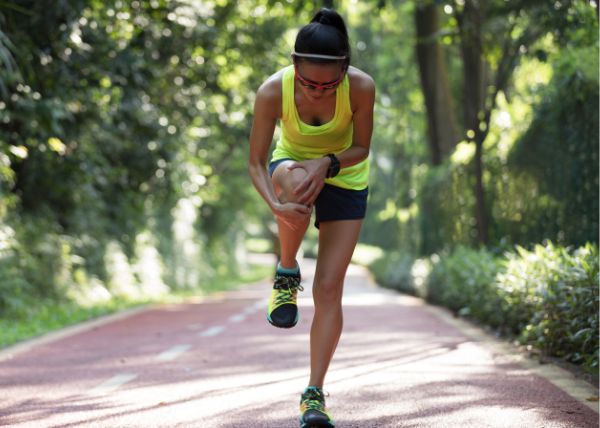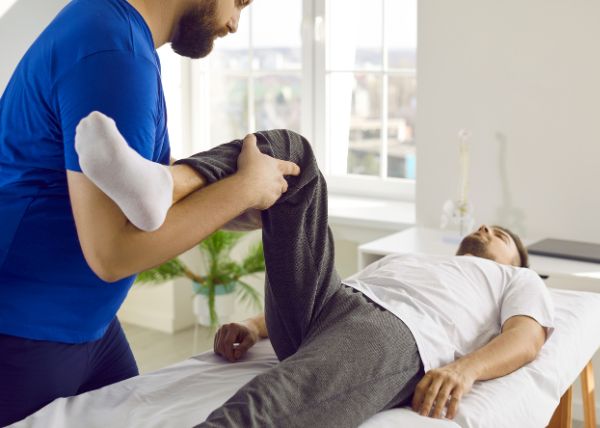
Do you experience sharp pain or discomfort in your shins when running or exercising? You may be suffering from shin splints, a common injury that can hinder your workout routine. While common, these symptoms may worsen or lead to more serious complications if left untreated. However, there are steps you can take to alleviate this pain and get back to your fitness goals, including chiropractic care. Sabet Chiropractic is here to break down what shin splints feel like, as well as treatments you can do at home and how we can help.
Shin splints, medically known as medial tibial stress syndrome (MTSS), refer to pain along the inner edge of the shinbone (tibia), which is the large bone in the lower leg. This condition commonly affects athletes, especially runners, dancers, and those involved in high-impact sports.
Shin splints occur due to repetitive stress on the shinbone and the connective tissues that attach muscles to the bone. The primary cause of shin splints is often overuse or excessive stress placed on the muscles, tendons, and bones of the lower leg.
If you believe you have shin splints, you may be wondering how to get rid of them. We've compiled some tips for getting rid of shin splints.
Dealing with shin splints can be frustrating, but there are several strategies and treatments that can help alleviate symptoms and promote healing. Here are some effective ways to manage shin splints:
The first step in treating shin splints is to rest and allow the affected muscles and tissues to heal. Avoid activities that aggravate the pain and refrain from high-impact exercises until the symptoms subside.
Applying ice packs to the affected area for 15-20 minutes several times a day can help reduce inflammation and alleviate pain associated with shin splints. Ice therapy can be particularly beneficial after engaging in physical activity.
Using compression wraps or sleeves can help reduce swelling and provide support to the lower leg muscles. Elevating the legs above heart level when resting can also help improve blood circulation and reduce swelling.
Performing gentle stretching exercises for the calf muscles, Achilles tendon, and shin muscles can help improve flexibility and reduce tension in the lower leg. Additionally, incorporating strengthening exercises, such as calf raises and toe curls, can help stabilize the muscles and prevent future injuries.
Wearing supportive and properly fitting shoes with adequate cushioning and arch support can help reduce stress on the lower leg muscles and alleviate pressure on the shins during physical activity.
Chiropractic care can play a valuable role in treating shin splints by addressing biomechanical imbalances, correcting spinal misalignments, and improving overall musculoskeletal function. Chiropractors use gentle adjustments and manual techniques to restore proper alignment and function to the spine and extremities, reducing stress on the muscles and joints of the lower leg.
If you've tried icing and resting, but are still experiencing pain from shin splints, it may be time to seek help from a chiropractor. At Sabet Chiropractic, we specialize in treating musculoskeletal conditions like shin splints through a combination of chiropractic adjustments, manual therapy, and rehabilitative exercises.

At Sabet Chiropractic, we understand the discomfort and limitations that shin splints can impose on your daily activities and exercise routine. Our approach to treating shin splints involves a comprehensive assessment of your musculoskeletal health to identify underlying issues contributing to your symptoms. Here's how chiropractic care can help:
Through various massage techniques, we aim to relax tense muscles, improve circulation, and accelerate healing in the affected areas. Massaging tight leg muscles will also help reduce inflammation and promote flexibility, making it easier for you to move without experiencing pain.
Our chiropractors will work closely with you during your recovery, ensuring that you regain your strength and range of motion and reduce the risk of re-injury. We'll suggest rehabilitation exercises to help speed your recovery and alleviate pain with shin splints.
We use chiropractic adjustments to correct misalignments in the body, particularly in the spine. This can enhance nervous system function, reduce pain, and promote the body's self-healing abilities.
At Sabet Chiropractic, we empower our patients with the knowledge and tools they need to manage their shin splints and prevent recurrence. We provide guidance on proper warm-up and stretching techniques, footwear selection, training modifications, and injury prevention strategies to support your recovery and long-term musculoskeletal health.
Not everyone's goals and shin splint injuries are the same. Our chiropractors at Sabet Chiropractic will create a customized treatment plan tailored to your specific needs and goals.
At Sabet Chiropractic, we're here to help with your sports injuries. Call us today at (951) 929-2225 to schedule your appointment.
Mon/Wed/Fri: 9:00am - 5:00pm
Mon:
Wed:
Fri:
9:00am - 5:00pm
9:00am - 5:00pm
9:00am - 5:00pm
Tues/Thurs/Sat: 9:00am - 5:00pm
Tues:
Thurs:
Sat:
9:00am - 5:00pm
9:00am - 5:00pm
9:00am - 5:00pm




This site is protected by reCAPTCHA and the Google Privacy Policy and Terms of Service apply.